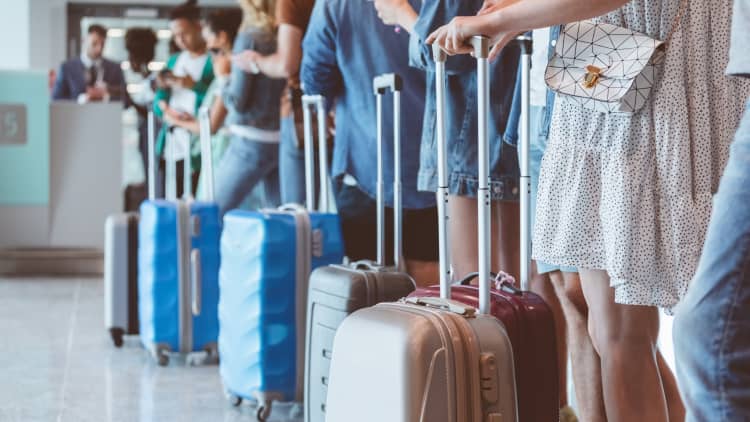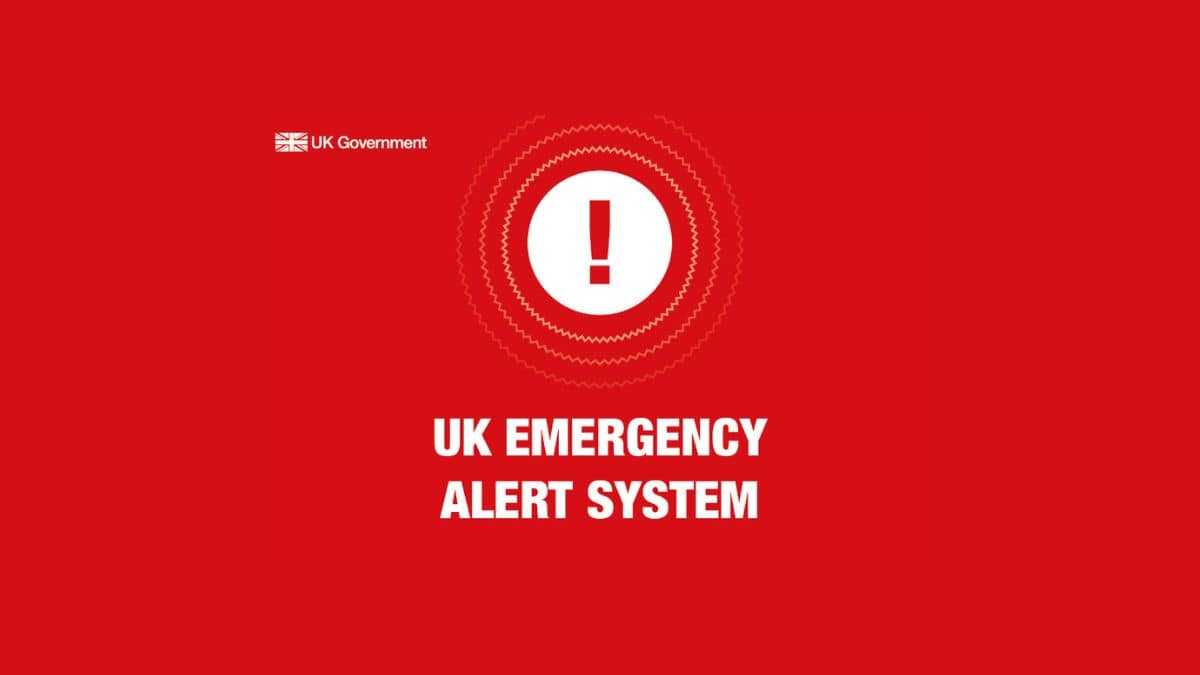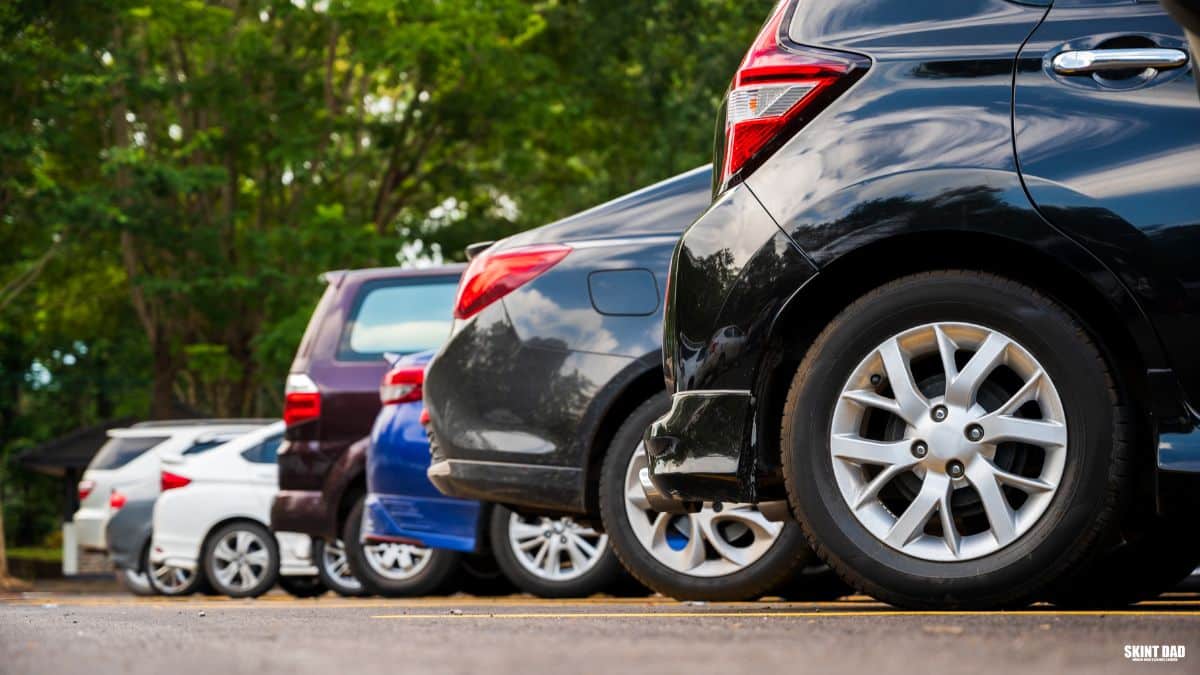
Passengers make their way through the terminal as they travel ahead of the Thanksgiving holiday at Washington Dulles International Airport in Dulles, Virginia, on Nov. 22, 2023.
Kevin Lamarque | Reuters
In air travel, minutes matter.
A few moments could be the difference between making and missing a connection for passengers — and could avoid delays that ripple across the schedule for airlines. Saved time could even lead to big savings for carriers as they scramble to get a handle on costs.
Major airlines are rolling out strategies that executives say could translate to lower costs and more efficient operations, even if the time savings on paper look negligible.
Some of these tools will be put to the test during what’s expected to be a busy holiday season, a year after a meltdown that stranded thousands of passengers at the end of 2022. Many of the improvements are being made behind the scenes.
American Airlines last year started using new technology to assign flight gates at Dallas/Fort Worth International Airport, the world’s second-busiest airport and American’s biggest hub, where it operates out of 135 regional and mainline gates.
The new procedures, replacing a near-manual hours-long process, allowed the airline to avoid many of its planes crossing from the east side to the west side of the sprawling airport, saving an average of two minutes of taxi time per flight, adding up to about 11 hours saved a day, American said.
The technology helped reduce taxi time by 20% and halved gate changes and conflicts, according to the carrier.
“It took the nightly process of gating the airline from four hours to about 10 minutes,” said American COO David Seymour.
The so-called Smart Gating program has been expanded to Charlotte Douglas International Airport, Miami International Airport, Ronald Reagan Washington National Airport and most recently, in May, Chicago’s O’Hare International Airport, Seymour said, adding that the airline is considering using the technology in Phoenix as well.
The gating technology in other airports aims to avoid gate congestion that could delay flights from departing or parking upon arrival.
“If you try to do late-minute gate changes as planes arrive … you could get out of sync with your caterers and fuelers,” Seymour said, adding that the tools American built are tailored for each airport’s issues.
In the first eight months of the year, 76.4% of American’s flights arrived within 15 minutes of their scheduled arrival times, which the Transportation Department considers on time. That performance ranks American third among major U.S. carriers for on-time arrivals, an improvement from fifth place during the same time period last year.
Short taxi times and other improvements can help airlines save fuel, one of airlines’ biggest costs. American said its new gating program saves it 1.4 million gallons of fuel a year, equal to about $4 million based on fuel prices at major U.S. airports this month.
Faster boarding
American isn’t alone in looking to shave off a few minutes.
United Airlines last month launched a new boarding procedure for economy class, accommodating window-seat passengers first followed by the middle and then the aisle. United told staff the changes could save it up to two minutes per flight.
Southwest Airlines has also experimented this year with ways to expedite boarding, trying everything from better signage to music on the jet bridge to keep travelers moving. For years, Delta Air Lines flight attendants and gate agents have used digital messages during boarding, to send alerts for issues such as full overhead bins.
Discount carrier Frontier Airlines is aiming to speed up boarding and deplaning through pathways outside jet bridges. The company has started using stairs directly onto and off the plane, taking advantage of a second door on the carrier’s Airbus jets.
“If you want to board an airplane faster, use two [gates] instead of one,” CEO Barry Biffle said.
The Denver-based airline is in talks with several airports to increase that type of boarding, without a traditional jet bridge. Biffle estimated that the carrier could have a third of its flights using stairways for boarding and deplaning in about two years.
Biffle said that could save as much as 10 minutes off the turn time, the amount of time it takes for a plane to park, deplane, reload and depart.
Robert Mann, who has worked at several airlines and is president of aviation consulting firm RW Mann & Co., said how airlines use the time savings will be key. Baking it back into the schedule could mean airlines wouldn’t have to block off as much time for a flight, he said.
“When you actually plan shorter flight times, you have more airplanes available,” he said.
An American Airlines spokesman said that as the airline becomes more efficient, in future schedules, it could allot less time for each flight, increasing the airline’s ability to add more flights.

Don’t miss these stories from CNBC PRO:







